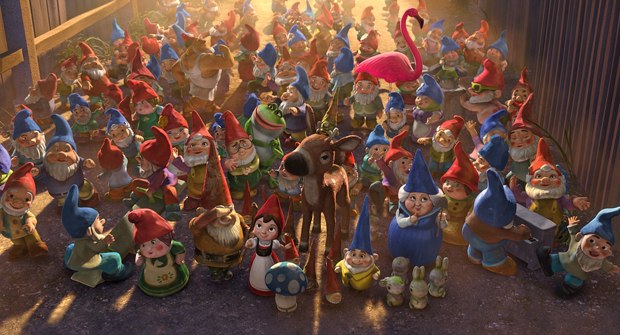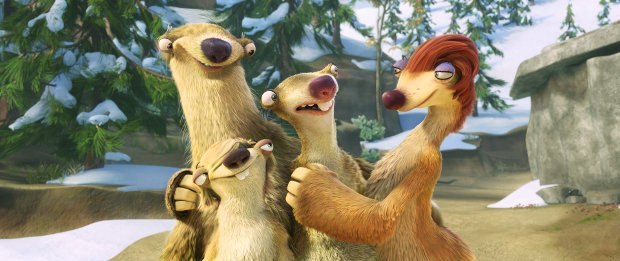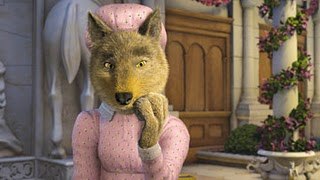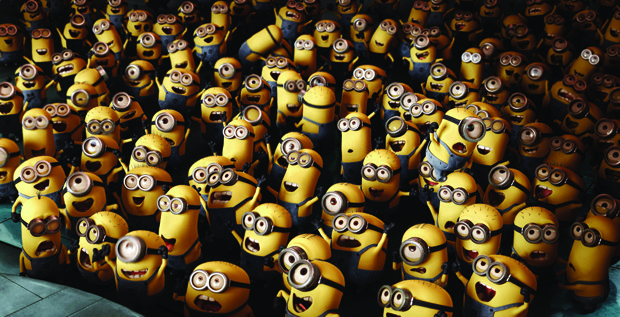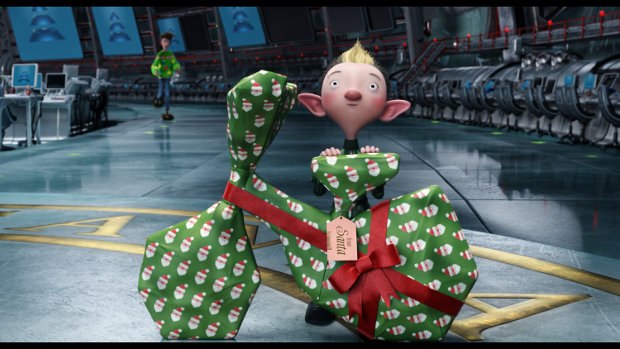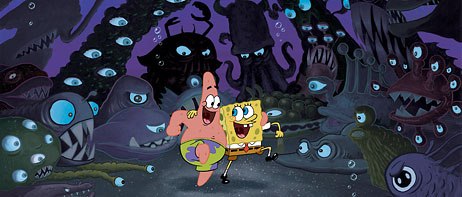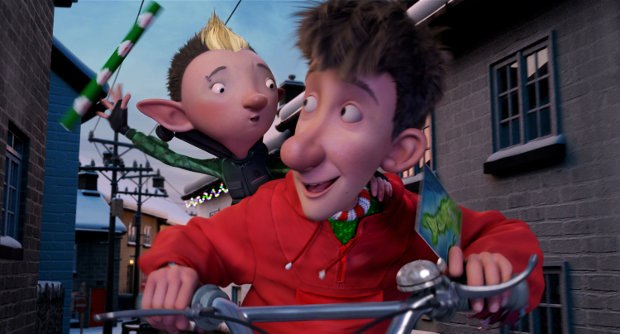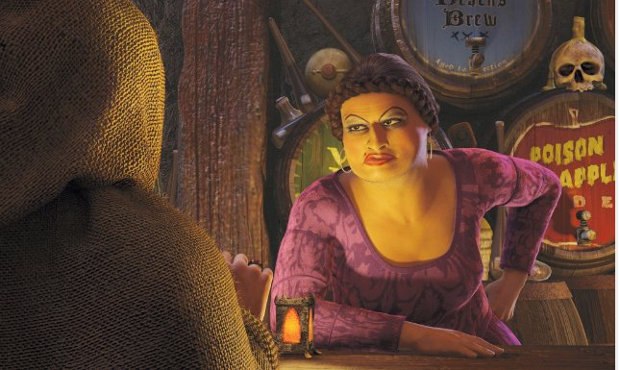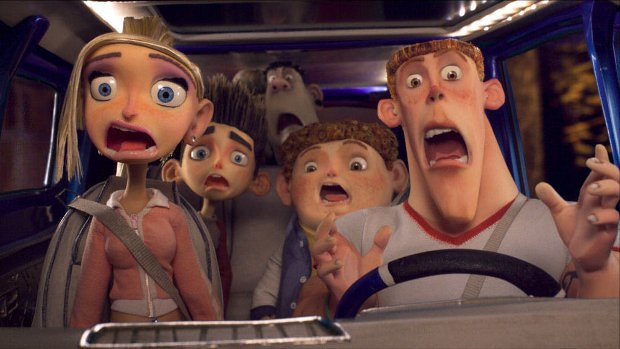Do a wider variety of narratives and protagonists mean unabashedly gay animated characters are being embraced by the majority of mainstream U.S. audiences?
In 2012, ParaNorman featured the first out gay character in an American, family-targeted, animated theatrical release. Mitch was one of the secondary protagonists. He had a rounded character defined by more than his sexuality, and his jock persona played against social stereotypes. There have been very few examples of any out characters in American theatrical animation, but looking at the past twenty years we can see a change in the types of animated movies being made, and a widening of the target audiences. This has lead to an increase of gay-tinged humor and ambiguous characters. At the same time there has been a decrease in the social censorship of potential LGBTQ themes. The fact that an unabashedly gay character like Mitch made it on the big screen speaks to a shift in American culture that is reflected in its animation.

Besides ParaNorman, there have been only two American animated theatrical releases in the past two decades 1 that overtly dealt with any LGBTQ characters or themes. In South Park: Bigger Longer & Uncut, the characters Satan and Saddam Hussein are gay lovers; and in Aqua Teen Hunger Force Colon Movie Film for Theaters, the character Frylock declares himself a transsexual lesbian trapped in a man's body, and the end credit scene shows Frylock as a woman. These were also the only two R-rated animated films released during this time.
The Motion Picture Association of America (MPAA) was created to establish a standard by which parents could judge if a film was appropriate for their children 2. In the last twenty years, 95% of the American animated films released were rated G or PG. Because in the U.S. animation is considered, by default, child or family fare, it affects the content allowed on the screen, and the type of stories studios are willing to pursue.
Although animation primarily targets the family audience, if we look at the data by decade we can see a gentle but persistent slide in what is considered an appropriate and marketable rating. From 1992-2001 74% of the films were G rated and 20% were PG. But from 2002-2012 only 27% of the movies were G rated while 68% were PG. Additionally, from 2002-2012 the number of animated films released doubled from 55 to 110.
With the PG rating gaining popularity, it has become increasingly important for animated features to speak to a wide audience in order to be successful. They must be enjoyed by not just children, but by teens and adults as well. The result is that animated movies are now primarily written for multiple audiences, with subtext and humor for adults and a wider range of content that can be explored. Because there are more animated movies being released, there is also more room for different types of stories to be told. This includes a greater potential for gay-tinged humor or gay-coded characters.
Gay-tinged humor tends to be a short punch line or reference that has a gay-reading, but doesn’t affect the world or define the sexuality of any of the characters. For example, in Gnomeo and Juliet,when two male garden gnomes (who are attached to the same molded grass) have a disagreement about which direction to go in, one gnome says to the other, “I wish I could quit you.” This is a Brokeback Mountain reference that only those adults who have seen the movie would recognize, though it was pointed out in countless reviews 3.
Gay-tinged humor can also come in the form of farcical homoerotic situations between characters that are established as straight. In Ice Age: Continental Drift two male characters, Diego and Sid accidentally kiss each other. “Why are we kissing?” Diego asks Sid. “Because cruises are romantic,” he replies. This display of homoerotic humor precedes a scene in which both characters are shown being attracted to sirens who have taken the form of beautiful animals of their respective species, and it is their attraction to these females that leads to their inadvertent kiss.
In the case of gay-coded characters, reliance on ambiguity allows for multiple readings of a character. This is something that was born out of moral-based censorship like the Hays code, and has been used in live action movies ever since. In the live action film Thank God It’s Friday (1978) Kenny Friedman added a gay male couple to a background crowd of dancing straight couples. He found in test screenings that straight viewers did not notice while gay viewers did. “Which is exactly what he wanted; he found that general audiences are unwilling to see gays and he made it easier for them. Had there been negative reaction to the scene, it would have been dropped" 4.
We can see a similar technique used in animated movies. In the end scene of Shrek there is a crowd of different characters from the movie. One of these is the Big Bad Wolf (in his grandma dress) holding the hand and arm of a knight in full armor. Later they dance together in the background. Because the Big Bad Wolf is presented as an ambiguous character, these two could be read as a gay couple - but they don’t have to be. We never see the face of the Knight (or hear the voice); there is no way of verifying the character’s gender.
In Despicable Me two minions make out in the background of a crowd scene 5. Although the minions wear the same androgynous outfit, are voiced by men, and all those minions who have names have male ones 6, there is no way to know if they are male, female, or have a gender at all.
Similarly at the beginning of Arthur Christmas when Santa returns from his mission, two elves in the background of a crowd mimic the iconic Alfred Eisenstaedt's Kissing Sailor picture. Because most of the elves are fairly androgynous it is hard to know the gender of those kissing. One review mentioned it as a gay kiss 7. Another review (from a Christian site) reminded viewers that because elves like to keep their hair short there is no reason to presume the two are men 8.
In this way gay coding works to a studio’s advantage. Family targeted animation might not overtly deal with LGBTQ themes, but by including characters that aren’t explicitly straight there is room for multiple readings; ambiguity is used to be inclusive. Studios can reap the benefit of different audiences reading a character or a scene in the way that is most pleasing to them, without the risk of ostracizing any of their viewers. Studios are further protected from risk because there is no way of proving intent. In all of the examples given there is no way of distinguishing between a viewer’s unintended reading of a character and a film’s attempt to speak to multiple audiences, unless an official statement is made.
Viewers have begun to recognize LGBTQ characters and humor from a history of cultural double coding in American cinema. It isn’t always clear whether the intent of a creator is to portray an LGBTQ character, or if they are simply using tropes and humor that have become a part of our cultural narratives removed from their original roots. Whether or not it is the intent, viewers are becoming aware when an animated movie drops clues that historically have been used to hint at a character’s sexual orientation. Ambiguity in male characters, particularly male duos, has become a wide enough recognized trope that it bares the same name as the popular Saturday Night Live sketch, the "Ambiguously Gay Duo."
Timon and Pumbaa from The Lion King, Spongebob and Patrick from Spongebob Squarepants the Movie, and Tulio and Miguel from The Road to El Dorado all received questions about their character’s sexuality. Sometimes these questions were negative, as was the case when various Christian review sites called out the Spongebob movie for making the title character and his best friend more effeminate, and for the movie’s multiple “nods to sexual uncertainty 9.” Other times the questions came in the form of jest, like the Daily Show sketch that poked fun at a gay reading of the El Dorado characters 10. Either way, the fact that a gay reading of these characters was brought up at all speaks to increasingly perceptive viewers.
Normally outing occurs of male characters, but recently two female characters have faced questions about their sexuality: Merida from Brave and Bryony from Arthur Christmas. It’s worth noting that Arthur Christmas was a British American coproduction and had a female director, Sarah Smith (the first female director for Aardman Animation Studio). Similarly Brave was created by Pixar’s first female director, Brenda Chapman, although she was pulled off the film halfway through production and replaced by a male director, Mark Andrews 11.
In Brave, Merida is a wild haired archery loving princess who would rather go on an adventure than think about boys. Although she has multiple suitors, she turns them all down. In Arthur Christmas the elves are shown as soldiers at war; making the magic of Christmas happen is like an elaborate military mission. The elf Bryony is androgynous with a spiked crew cut and an eyebrow piercing, and she constantly demonstrates her fighting spirit (and her talent as a gift-wrap extraordinaire). She also doesn’t have a love interest.
In an interview Sarah Smith was asked if Bryony was intended as a lesbian character, her response was: “There wasn’t a particular decision to try and make any point about that other than to make her look like a little female soldier 12.” The fact that they the film didn’t make any point about Bryony’s sexuality is part of why she pinged some people’s gaydar, because it is so rare to have a female protagonist who is not overtly heterosexual. It is not to say that the lack of “potentially lesbian” characters is something actively going on in the production process, it is simply a numbers game. There are on average more male characters in American animated movies than female.
Author Shannon Hale looked at all of the American animated theatrical releases in 2011, 73% of the 163 characters were male 13 (numbers drawn from the top billed characters as listed in their cast overviews). Her study overlooked one movie, Winnie the Pooh, which when added only emphasizes her point since 9 out of the 10 characters in this movie were also male, bumping the percentage up to 74. Because there are more male characters, there is more room for ambiguity (intended and unintended), and more types of manhood can be explored.
In this way both Merida and Bryony stand out, because not only do they explore different types of womanhood, they do so without having a romance. There is room for ambiguity there. Do either of them show interest in women, no – but equally they don’t show interest in men (which is rare for an animated female protagonist of an acceptable age to date).
To summarize Adam Markovitz’s article about Merida: it’s not that she is a lesbian; it’s the fact that she could be 14. The increase in animated movies being produced and the wider variety of stories being told has begun to make the types of characters we see more varied, and viewers who would like to see LGBTQ characters are asking for confirmation on ambiguous ones. At the same time viewers who are less receptive to such characters are becoming less vocal.
In a much quoted article that has now been pulled from publication, the Traditional Values Coalition (TVC) warned that Shrek 2 was promoting cross-dressing and transgenderism 15. This conclusion was drawn from three specific scenes. Doris, referred to as an ugly stepsister, is voiced by a man, has masculine features paired with flashy makeup, wears a dress and is presented as a female character in the movie. She hits on a male character, Prince Charming. The Big Bad Wolf is referred to as “gender confused.”’ Pinocchio is discovered to be wearing woman’s underwear.
The TVC drew the conclusion that “Shrek 2 is billed as harmless entertainment but contains subtle sexual messages.” This is undeniably true, but it is also the case for the majority of the G and PG animated movies released, because coded sexual and adult humor is included for the adult viewers. The lack of credence given to the TVCs review might be why the article was pulled, and they issued no further complaints over Shrek the Third or Shrek Forever After, which employed similar humor.
When ParaNorman was released there were very few complaints made about Mitch. It is telling that the few review sites that negatively pointed out his sexuality also spoke about witchcraft as equal moral concerns 16 17. There is an increasing divide between what certain conservative religious sects see as a threat for children, and what the majority of American families are concerned about in their viewing. To many Mitch as a gay character was seen as no more a danger to child viewers then a character like Harry Potter would be as a wizard. He is simply another type of protagonist and another type of narrative.
Having a character like Mitch on the big screen speaks to cultural changes. Since the majority of animated movies are now rated PG, there is more room in the type of content allowed. More movies released means the potential for more risk taking in the types of characters and stories, and gay-tinged humor and gay-coded characters have increasingly been met with approval by audiences or at the very least acceptance by viewers who care less about the sexuality of the characters and more about the narratives.
ParaNorman did have some things going for it. Coraline had already helped define the animation studio, LAIKA, as being edgy, artsy, and willing to take risks. So, LAIKA did not necessarily face the same pressures that a studio like Disney might have (a brand built on “family values”). Mitch was also very safe. His boyfriend was never seen on screen, his sexuality was introduced at the end of movie after viewers were already invested in his character, and he was outed in a humorous way (but without the punch line being at his expense).
This is not to undermine what a monumental thing it was to have Mitch be gay. In fact, the outing of his character at the end of the movie strengthens the themes of the story. In an interview with The Advocate, writer and director Chris Butler says,
“It was important to us. We were telling a story that was fundamentally about intolerance. We believed that it was important to have the strength of our convictions. And yes, we played it off as a punch line to a joke. But in a sense, that made it all the more potent, I think, because Mitch is just an ordinary guy — and what I wanted to do with the script throughout the story was, first of all, to turn preconceptions on their head. But also, every character in the movie is judging someone else, good and bad, usually misjudging, and I wanted to make the audience complicit in that 18.”
ParaNorman is revolutionary, not just because it makes the unspoken official – Gay characters can exist…Look there he is – but because it reflects our changing social values. Mitch shows that American animated films can have a wider variety of narratives and protagonists and still be embraced by the majority of mainstream audiences.
Footnotes:
1 All American (or American coproduced) animated theatrical releases that were released to at least 500 theaters and were primarily animated (there could be live action scenes, but focus was on animated characters in an animated world) from 1992-2012.
Beck, Jerry. The Animated Movie Guide. Chicago: Chicago Review, 2005. Print.
2 Dick, Kirby. This Film Is Not yet Rated. Toronto, Ont.: Distributed in Canada by Mongrel Media, 2006.
3 http://www.slantmagazine.com/film/review/gnomeo-and-juliet/5267
4 Russo, Vito. The Celluloid Closet. New York: Harper & Row, 1981. 226. Print
5 https://www.youtube.com/watch?v=cmjkcrE7BzM
6 http://www.femalefirst.co.uk/movies/Despicable+Me+Creating+The+Minions-9217.html
7 http://www.abc.net.au/nightlife/stories/3385602.htm
8 http://www.pluggedin.com/videos/2012/q4/arthurchristmas.aspx
9 http://www.pluggedin.com/videos/2004/Q4/SpongeBobSquarePantsMovie.aspx
10 http://www.thedailyshow.com/watch/thu-april-13-2000/out-at-the-movies---the-road-to-el-dorado
11 http://www.hollywoodreporter.com/news/female-director-pixar-brave-brenda-chapman-362772
12 http://www.thedivareview.com/Arthur_Christmas_Sarah_Smith_Interview.htm
13 http://oinks.squeetus.com/2012/02/the-invisible-animated-girl.html
15 http://www.salon.com/2004/06/03/shrek_2/
16 http://www.christiancinema.com/catalog/article_info.php?articles_id=8502#
17 http://christiananswers.net/spotlight/movies/2012/paranorman2012.html?zoom_highlight=paranorman
--
Ashley Woods, a native Oregonian, has a degree in Digital Arts from the University of Oregon. Growing up during the creator-driven renaissance of the nineties led to her love of animation. She writes about censorship and sexuality in children's animation in her blog series Cartoon Closet - http://woodsanimation.blogspot.com/p/cartoon-closet.html

